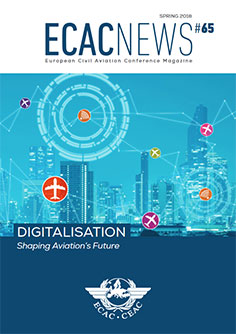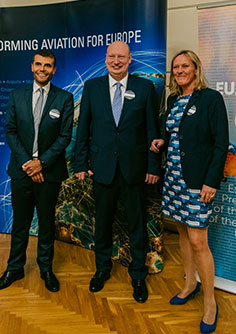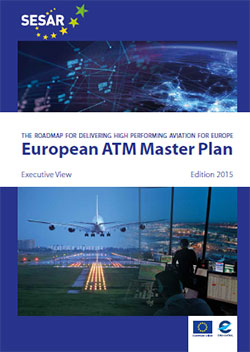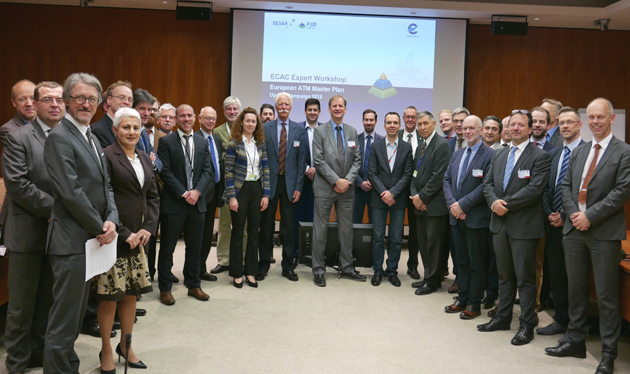Europe’s aviation sector needs to get digitally ready for the forecasted traffic growth of conventional aircraft and drones. This is an ambitious job which can only be done collectively. These were some of the main messages shared by those attending the launch event of a consultation involving experts designated by members of the European Civil Aviation Conference (ECAC), an intergovernmental body that represents countries within and outside the EU. Taking place on 12 April, participants in the event were informed on the areas of priority and progress on the European ATM Master Plan, the roadmap for modernising the continent’s air traffic management system (ATM).
Organised and hosted by Eurocontrol, the event brought together experts from ECAC member states representing a wide range of aviation stakeholders, including the Civil Aviation Authorities of Albania, Bulgaria, Cyprus, Denmark, Greece, Portugal and the UK; Czech Republic Ministry of Transport; air navigation service providers (ANSPs) from Austria (AustroControl), Belgium (BelgoControl), Czech Republic (ANS CR) Germany (DFS), France (DSNA), Hungary (HungaroControl), UK (NATS), NAVIAR (Denmark), Poland (PANSA), Spain (ENAIRE) and Switzerland (Skyguide) and ANSP alliances (Borealis, COOPANS), the air traffic management industry (Leonardo), airports (Heathrow), European bodies and professional associations (CANSO, EBAA, EDA, ERA, ICB), military national representatives and international associations (IATA). Among the priorities covered, participants expressed the pressing need to tackle the current and predicted air traffic congestion. They pointed to the need to investigate new digital and automated technologies as a top priority alongside the integration of drones and the rationalisation of Europe communications, navigation and surveillance (CNS) ground infrastructure.
Drafting of the 2018 edition of the European ATM Master Plan is underway within the SESAR framework (supported by Project PJ20). The ECAC consultation is expected to provide early inputs on the potential of technological advances and the key development and deployment activities needed to bring Europe’s aviation infrastructure into the digital age. The aim is to integrate the feedback into the Master Plan, which will be delivered for a formal stakeholder consultation phase followed by a target approval by the SESAR JU Administrative Board by the end of 2018. The approved Master Plan will then constitute the roadmap for the modernisation of the European ATM. It will also constitute Europe’s input into the 2019 Global Air Navigation Plan from the International Civil Aviation Organization (ICAO).
Commenting on the consultation, participant Denisa Osmani of Albanian CAA said: “Delivering a high-performing aviation for Europe requires all actors to work closely in addressing the major weaknesses in the ATM system, defining the best solutions and ensuring better harmonisation in the era of digitalisation.” Also participating, Micheal Loeffler of Austro Control on behalf of CANSO said that the consultation offered, “a unique opportunity for ATM stakeholders and airspace users to share information and improve their mutual understanding of each other’s needs”. For Manfred Mohr, IATA airspace user representative, the Master Plan must be, “innovative, with a clear performance-driven approach and a modern CNS strategy, with a real focus on ATM resulting in air traffic control capacity improvements. This would bring back the trust of the airspace users and demonstrate that all stakeholders have understood what we, the airspace users, are looking for”.

 Opinion piece by Florian Guillermet
Opinion piece by Florian Guillermet
 2018 European ATM Master Plan Campaign kick-off in Tallinn
2018 European ATM Master Plan Campaign kick-off in Tallinn
 European ATM Master Plan
European ATM Master Plan
